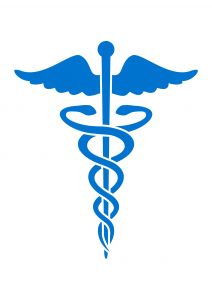
This is a follow-up to my blog post titled, “Factors that may be Considered when Evaluating a Deviation from the Standard of Care During Breast Augmentation ~ part 1.” The following are more Factors that should be considered when determining, in a Medical Malpractice Case involving Breast Augmentation, whether or not there has been a deviation in the Standard of Care, and why these factors are important:
12.) Did the Patient and the Clinician Discuss the Details of What is a Full Recovery and the Time needed for a Full Recovery?
Why is this important? In order for the Patient to plan for a full and successful recovery, the Patient must be educated on issues such as how long the breasts will be sore after surgery (ex. most likely a few days), when will the stitches be removed post-operative (ex. usually 7-10 days), and how long the Patient should plan to be out of work (ex. 2 weeks if the Patient has a desk job, but most likely longer if the Patient has a job involving Manual Labor).
13.) Did the Patient and the Clinician Discuss any Additional Costs that may be Incurred if there is a Complication or Surgical Revision?
Why is this important? Again, in order for the Patient to make an educated decision about surgery, the Patient should take into consideration the long and short term costs of surgery and breast implants and be prepared if there are complications at any time post-operative such as a rupture of the implant, the replacement of an implant, and so forth.
14.) Was the Patient Informed about Mammograms that are Required After Surgery?
Why is this important? It is imperative that the Patient understand that implants may hide over half of the tumors that are cancerous that may be present in the patient that would normally be able to be detected by mammograms. Furthermore, there is a risk of the implant rupturing during a mammogram that the Patient should also take into consideration.
15.) Did the Patient Give an Informed Consent to the Surgery?
Why is this important? In most States, the law requires that a Patient give the Surgeon Informed Consent prior to the Surgeon giving any Treatment.
16.) Did the Clinician Obtain a Comprehensive Medical History on the Patient?
Why is this important? As discussed in the prior blog post, Past Medical History (PMH) of the Patient includes, but is not limited to, all past and current hospitalizations, illness, trauma, surgery, medications, and allergies including the location, date, and physician/surgeon for each surgery and/or hospitalization. It is very important that the Clinician identify any issues such as alcoholism, cardiovascular disease, cancer, diabetes, and/or psychiatric conditions of the Patient, and any medications the Patient is currently taking such as antibiotics, cardiac medications, immunosuppressives, and/or psychotropics.
This can all be obtained if a complete Past Medical History (PMH) is completed by the Clinician. The Clinician also needs to be aware of whether or not a disorder that was previously diagnosed is the reason the Patient is seeking treatment or surgery.
17.) Was the Patient Properly Advised about the Discontinuation of any Medications that might Impair Coagulation?
Why is this important? To prevent and avoid any bleeding that is unnecessary, any medications, herbs, supplements, and/or other substances that may prevent or otherwise interfere with coagulation will most likely need to be stopped for a period of time prior to surgery.
18.) Did the Patient and the Clinician Discuss the Different Methods of Augmentation?
Why is this important? Presently, there are five (5) methods in the U.S. for breast augmentation and the Patient should be aware of all of these methods and the differences so the Patient can make an educated decision as to the type of augmentation that the Patient desires and is best for the Patient under the circumstances. The five (5) methods are as follows: 1.) Silicone Implants; 2.) Saline Implants; 3.) External Tissue Flap; 4.) External Tissue Expanders; and 5.) Autologous Fat Injections.
19.) Which of the Methods for Breast Augmentation were Used?
Why is this important? It is imperative that the Patient know which type of method was used for the Breast Augmentation so that the Patient is aware of the proper follow-up and treatment for the type of method which was used.
At Julie A. Rice, Attorney at Law, & Affiliates, we are experts at handling these types of cases so if you or a loved one has been injured or died from a Breast Augmentation, then please Contact Us for your free legal consultation.
Medical Malpractice and/or Product Liability time limitations in these types of cases are highly sensitive so it is imperative that you seek legal assistance in a timely manner. We look forward to speaking with you soon and assisting you with your case.